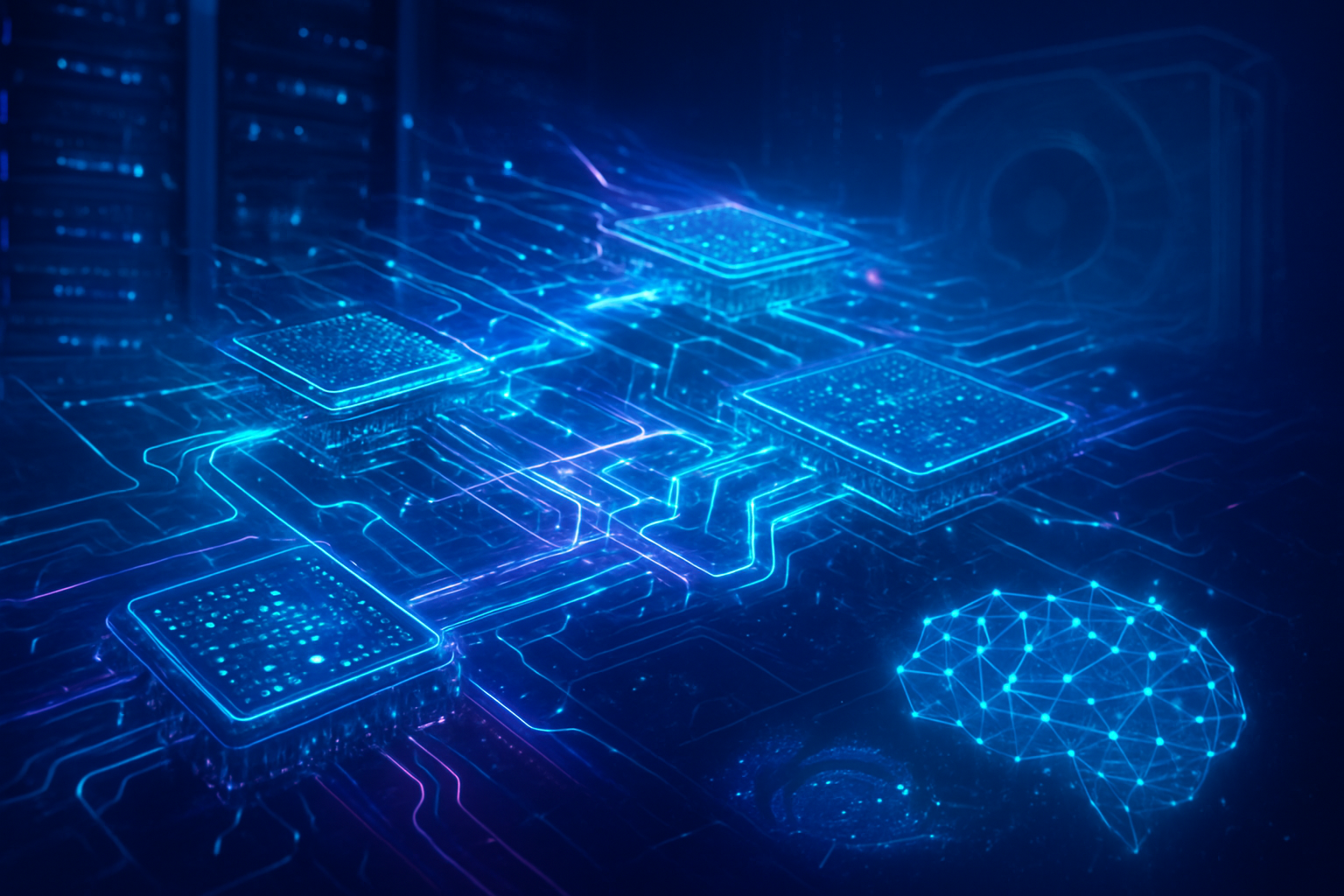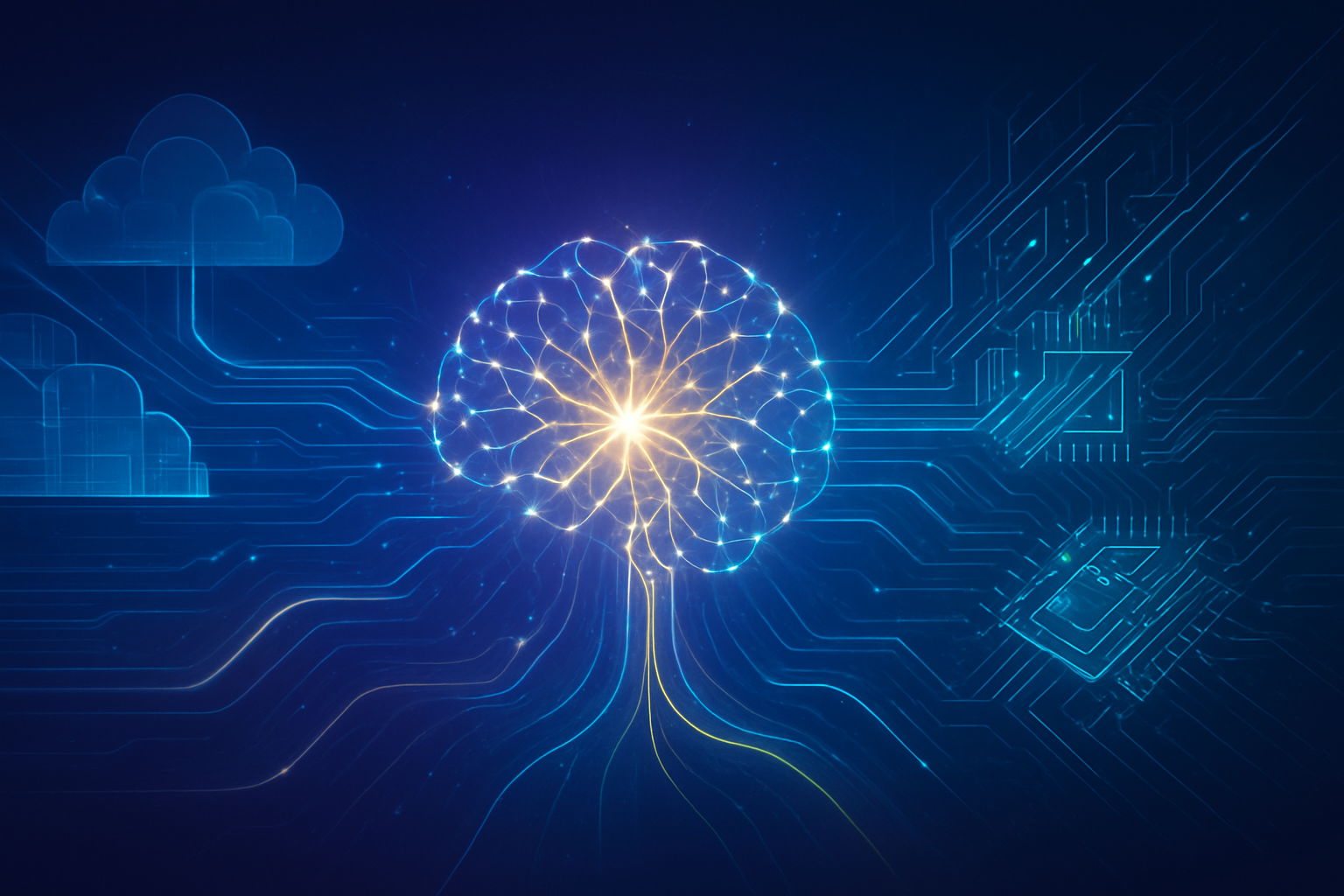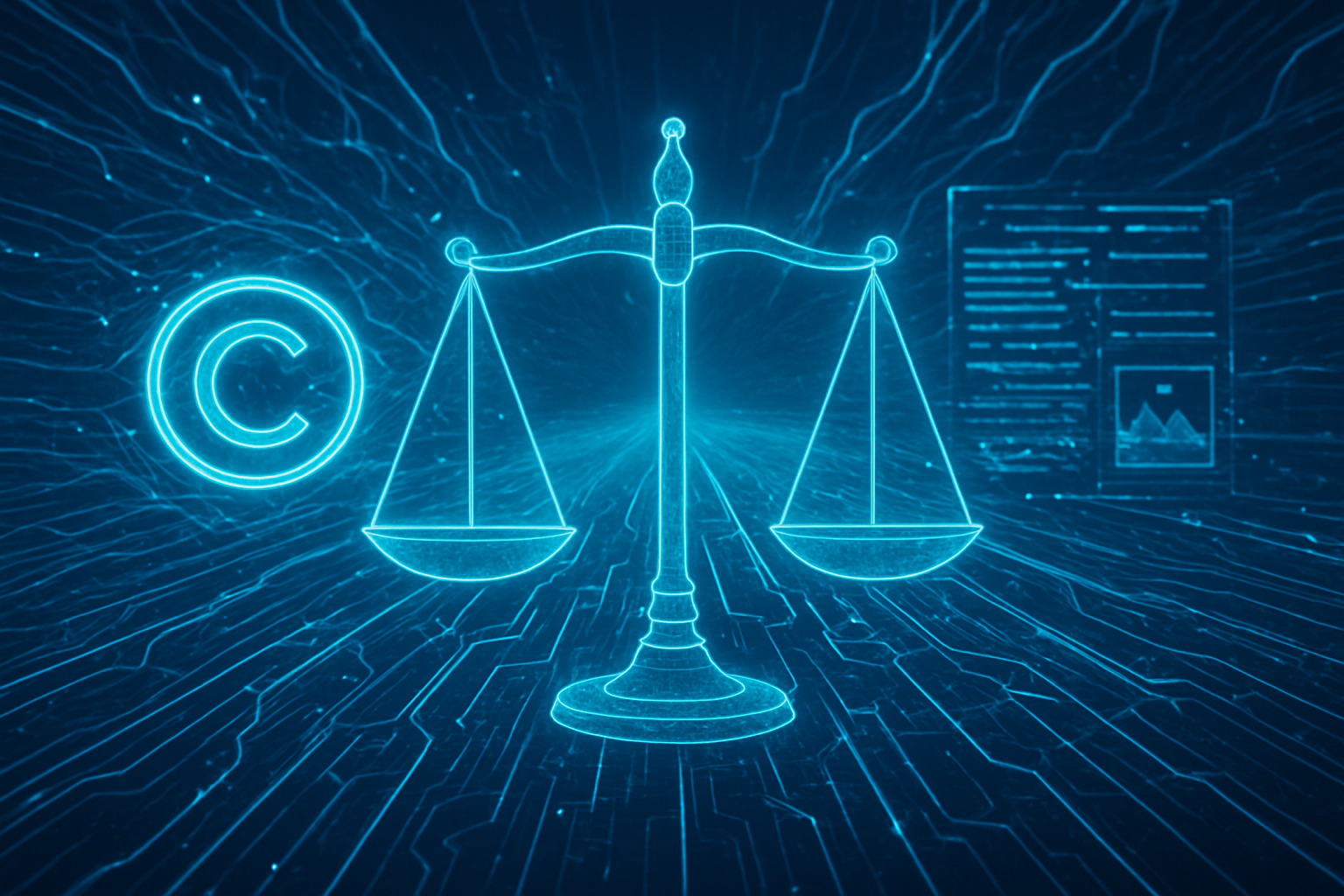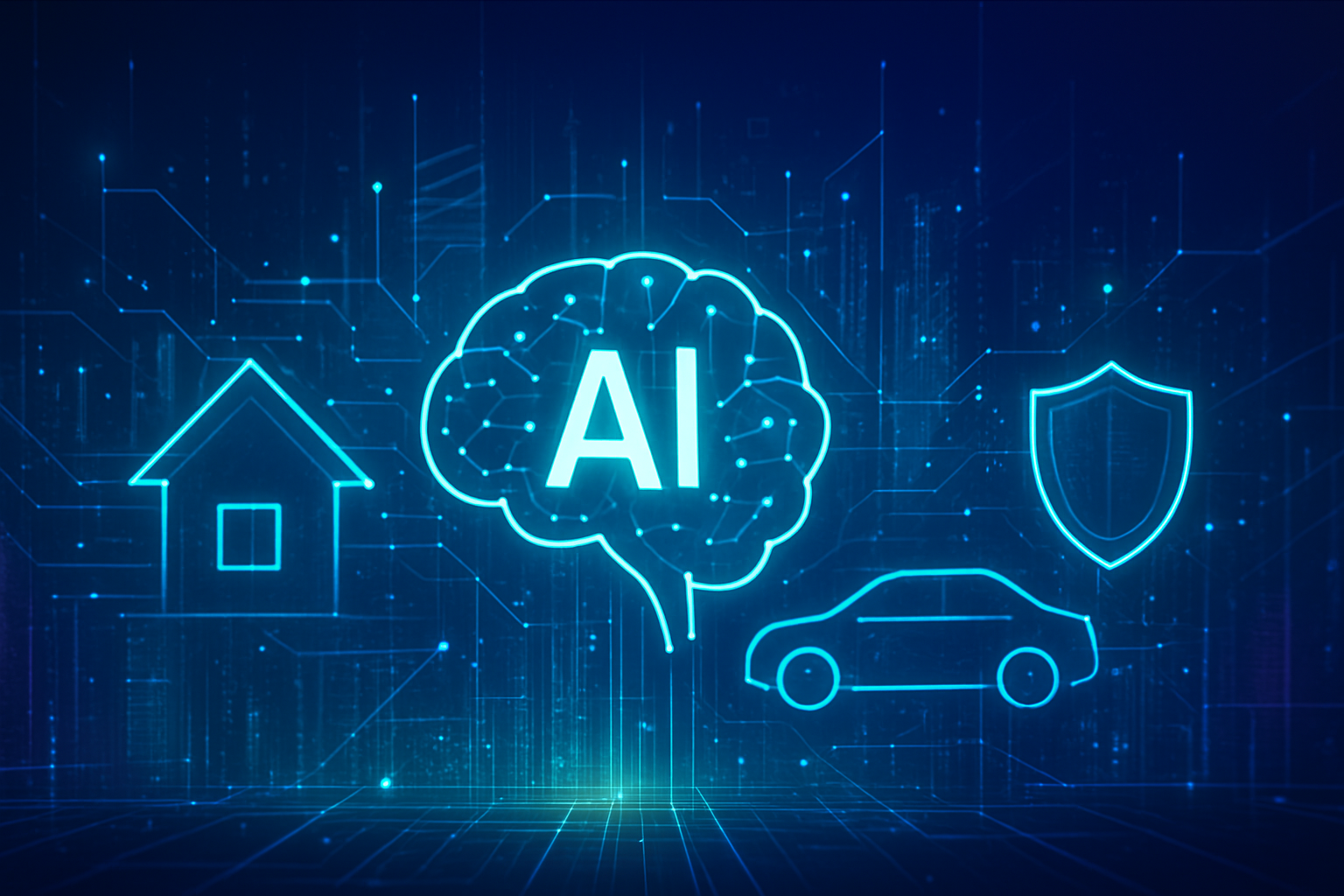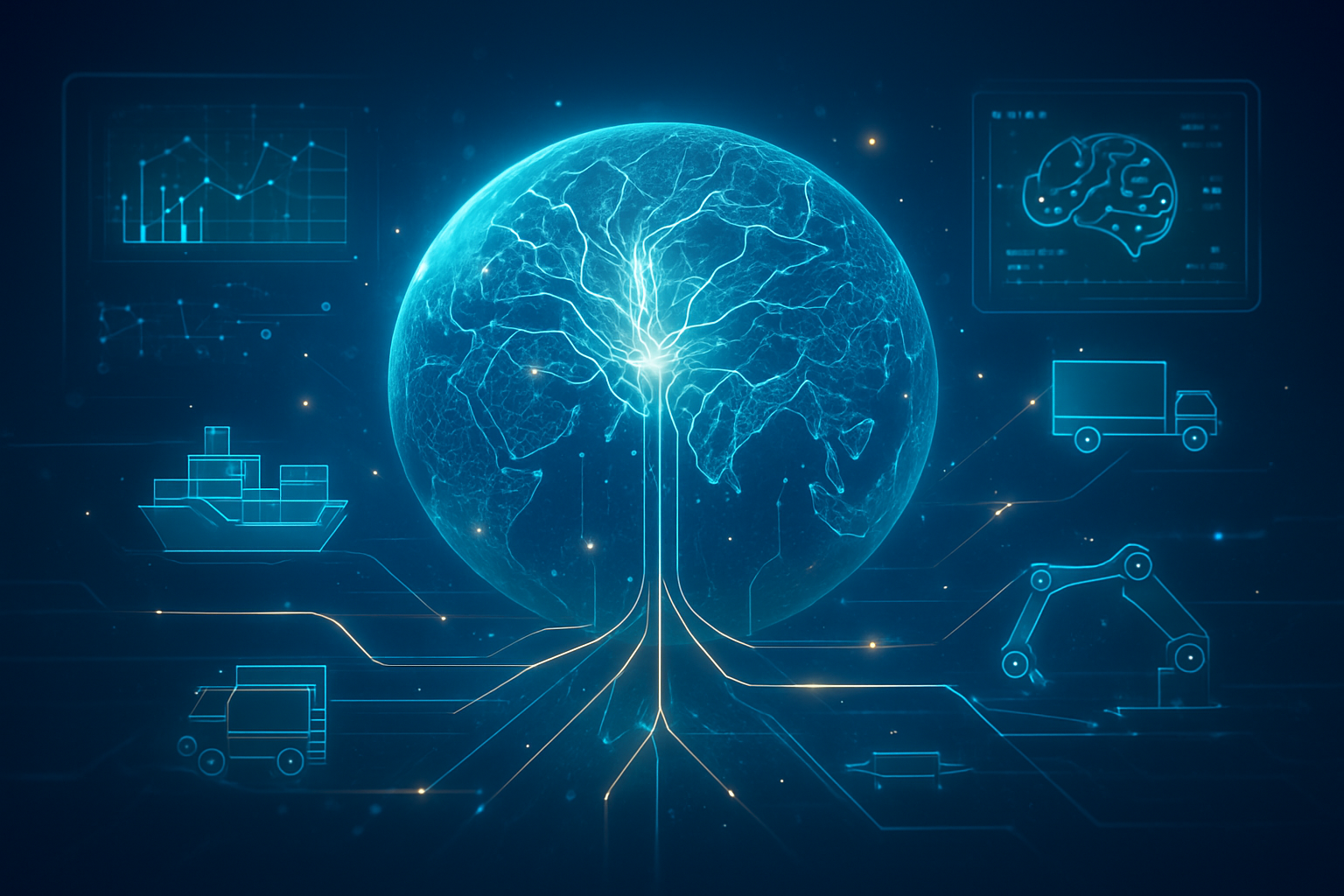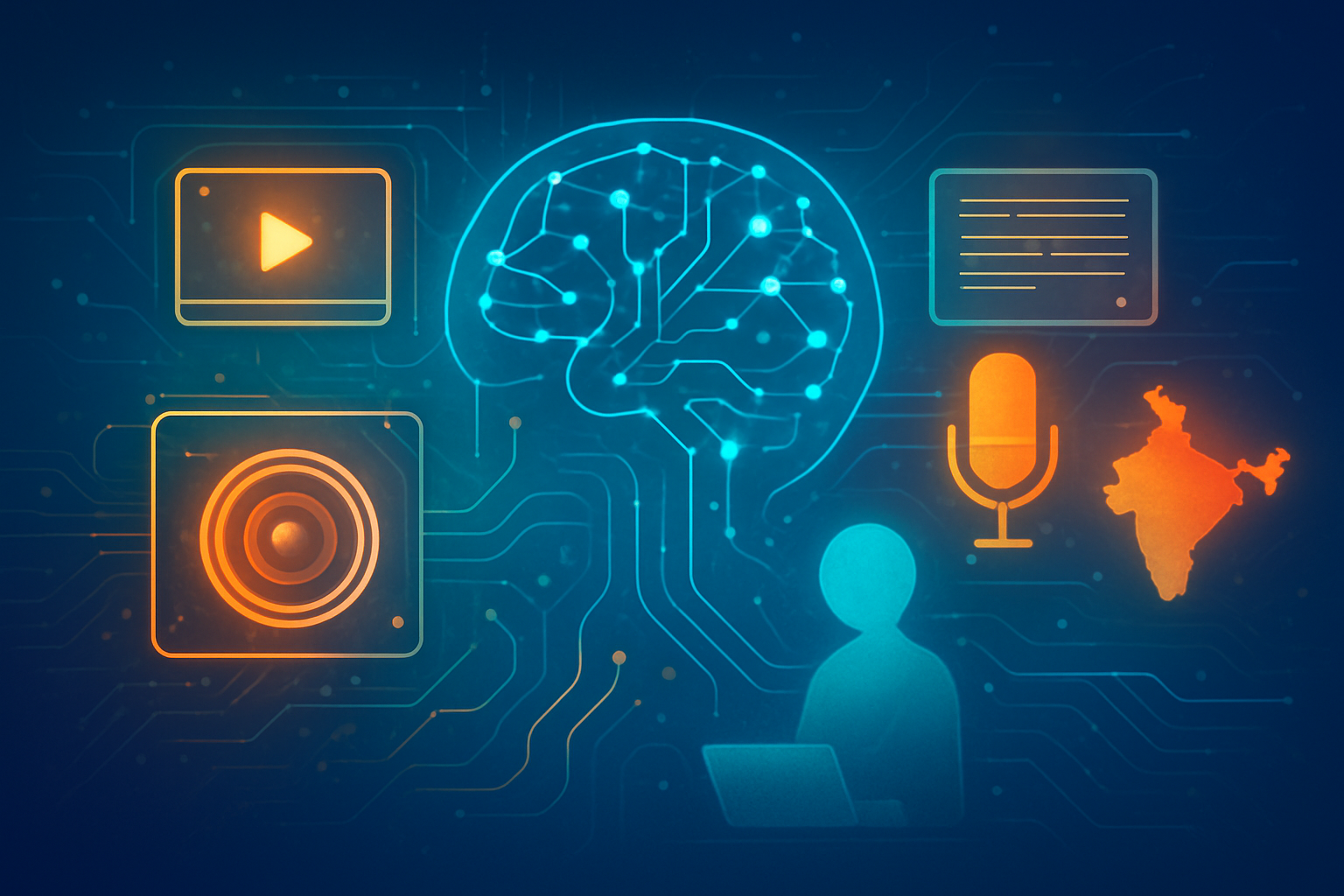Artificial intelligence has transitioned from an emerging technology to a fundamental pillar of corporate strategy and leadership, profoundly reshaping the business landscape as of late 2025. This evolution is marked by AI’s unparalleled ability to deliver advanced insights, automate complex processes, and necessitate a redefinition of leadership competencies across diverse industries. Companies that fail to integrate AI risk losing relevance and competitiveness in an increasingly data-driven world.
The immediate significance lies in AI's role as a critical "co-pilot" in the executive suite, enabling faster, more accurate, and proactive strategic decision-making. From anticipating market shifts to optimizing complex supply chains, AI is augmenting human intelligence, moving organizations from reactive to adaptive strategies. This paradigm shift demands that leaders become AI-literate strategists, capable of interpreting AI outputs and integrating these insights into actionable business plans, while also navigating the ethical and societal implications of this powerful technology.
The Technical Core: Advancements Fueling AI-Driven Leadership
The current transformation in business leadership is underpinned by several sophisticated AI advancements that fundamentally differ from previous approaches, offering unprecedented capabilities for prediction, explanation, and optimization.
Generative AI (GenAI) and Large Language Models (LLMs) are at the forefront, deployed for strategic planning, accelerating innovation, and automating various business functions. Modern LLMs, such as GPT-4 (1.8T parameters) and Claude 3 (2T parameters), demonstrate advanced natural language understanding, reasoning, and code generation. A significant stride is multimodality, allowing these models to process and generate text, images, audio, and video, crucial for applications like virtual assistants and medical diagnostics. Unlike traditional strategic planning, which relied on human-intensive brainstorming and manual data analysis, GenAI acts as a "strategic co-pilot," offering faster scenario modeling and rapid prototyping, shifting strategies from static to dynamic. The AI research community and industry experts are cautiously optimistic, emphasizing the need for responsible development and the shift from general-purpose LLMs to specialized, fine-tuned models for domain-specific accuracy and compliance.
Explainable AI (XAI) is becoming indispensable for building trust, ensuring regulatory compliance, and mitigating risks. Tools like SHAP (SHapley Additive exPlanations) and LIME (Local Interpretable Model-agnostic Explanations) provide transparency into AI's "black box" decisions. SHAP rigorously attributes feature contributions to predictions, while LIME offers local explanations for individual outcomes. This contrasts sharply with earlier deep learning models that often provided accurate predictions without clear insights into their internal logic, making XAI crucial for ethical considerations, bias detection, and adherence to regulations like the upcoming EU AI Act.
Causal AI is gaining traction by moving beyond mere correlation to identify cause-and-effect relationships. Utilizing frameworks like Directed Acyclic Graphs (DAGs) and Judea Pearl's Do-Calculus, Causal AI enables leaders to answer "why" questions and simulate the impact of potential actions. This is a significant leap from traditional predictive AI, which excels at identifying patterns but cannot explain underlying reasons, allowing leaders to make decisions based on true causal drivers and avoid costly missteps from spurious correlations.
Reinforcement Learning (RL) is a powerful paradigm for optimizing multi-step processes and dynamic decision-making. RL systems involve an agent interacting with an environment, learning an optimal "policy" through rewards and penalties. Unlike supervised or unsupervised learning, RL doesn't require pre-labeled data and is applied to optimize complex processes like supply chain management and financial trading strategies, offering an adaptive solution for dynamic, uncertain environments.
Corporate Ripples: AI's Impact on Tech Giants, AI Companies, and Startups
The pervasive integration of AI into strategic decision-making is fundamentally reshaping the competitive landscape, creating distinct winners and challenges across the tech industry.
Tech Giants such as Microsoft (NASDAQ: MSFT), Amazon (NASDAQ: AMZN), and Alphabet (NASDAQ: GOOGL) are early and significant beneficiaries, consolidating value at the top of the market. They are making substantial investments in AI infrastructure, talent, models, and applications. Microsoft, with its Azure cloud platform and strategic investment in OpenAI, offers comprehensive AI solutions. Amazon Web Services (AWS) dominates AI-powered cloud computing, while Alphabet leverages Google Cloud for AI workloads and integrates its Gemini models across its vast user base, also forming partnerships with AI startups like Anthropic. Oracle (NYSE: ORCL) is aggressively expanding its data center capacity, investing in AI database platforms and agentic AI opportunities, with hundreds of agents already live across its applications. These hyperscalers are not just developing new AI products but embedding AI to enhance existing services, deepen customer engagement, and optimize internal operations, further solidifying their market dominance.
Dedicated AI Companies are at the forefront, specializing in cutting-edge solutions and providing the foundational infrastructure for the global AI buildout. Companies like NVIDIA (NASDAQ: NVDA) with its GPUs and CUDA software, TSMC (NYSE: TSM) for advanced chip manufacturing, and AMD (NASDAQ: AMD) with its AI-capable chips, are indispensable. Specialized AI service providers, such as Pace Generative, focusing on AI visibility and generative optimization, are also gaining traction by offering targeted solutions. AI database platforms, enabling secure access and analysis of private data using advanced reasoning models, are experiencing significant growth, highlighting the demand for specialized tools.
Startups are leveraging AI as their backbone for innovation, enabling them to scale faster, optimize operations, and achieve a competitive edge. AI allows startups to automate repetitive tasks like customer support, streamline data analysis, and deliver highly personalized customer experiences through predictive analytics. Their inherent agility enables rapid AI integration and a focus on targeted, innovative applications. However, startups face intense competition for AI talent and resources against the tech giants. The competitive landscape is also seeing a shift towards "responsible AI" as a differentiator, with companies prioritizing ethical practices gaining trust and navigating complex regulatory environments. Potential disruptions include workforce transformation, as AI may displace jobs while creating new ones, and challenges in data governance and ethical concerns, which can lead to project failures if not addressed proactively.
A Broader Lens: AI's Wider Significance and Societal Implications
The pervasive integration of AI into strategic decisions and leadership roles represents a profound shift in the broader AI landscape, moving beyond incremental improvements to systemic transformation. This era, often dubbed an "AI renaissance," is characterized by unprecedented opportunities but also significant concerns.
This development marks a transition from AI primarily automating tasks to becoming an integrated, autonomous, and transformative strategic partner. Unlike previous waves of automation that focused on efficiency, current AI, particularly generative and agentic AI, is redefining leadership by making complex decisions, providing strategic foresight, and even exhibiting a degree of autonomous creativity. The launch of generative AI tools like ChatGPT in late 2022 served as a major tipping point, demonstrating AI's ability to create content and solutions, paving the way for the current era of Agentic AI in early 2025, where autonomous systems can act with minimal human intervention.
The positive impacts are immense: enhanced efficiency and productivity as AI automates routine tasks, superior decision-making through data-driven insights, accelerated innovation, and personalized leadership development. AI can also help identify systemic biases in processes, fostering more diverse and inclusive outcomes if implemented carefully.
However, significant concerns loom. Ethical dilemmas are paramount, including the potential for AI systems to perpetuate and amplify biases if trained on historically flawed data, leading to discrimination. The "black box problem" of opaque AI algorithms eroding trust and accountability, making Explainable AI (XAI) crucial. Data privacy and security are constant concerns, demanding robust measures to prevent misuse. Over-reliance on AI can undermine human judgment, emotional intelligence, and critical thinking, leading to skill atrophy. Workforce transformation poses challenges of job displacement and the need for massive reskilling. Integration complexity, cybersecurity risks, and regulatory compliance (e.g., EU AI Act) are ongoing hurdles. The immense energy and computational demands of AI also raise sustainability questions.
Compared to previous AI milestones, this era emphasizes human-AI collaboration, where AI augments rather than replaces human capabilities. While earlier AI focused on predictive systems, the current trend extends to intelligent agents that can plan, execute, and coordinate complex tasks autonomously. The challenges are now less technical and more "human," involving cultural adaptation, trust-building, and redefining professional identity in an AI-augmented world.
The Horizon: Future Developments in AI and Leadership
The trajectory of AI's influence on strategic decisions and leadership is set for continuous and profound evolution, with both near-term and long-term developments promising to redefine organizational structures and the very essence of strategic thinking.
In the near term (late 2025 and beyond), leaders will increasingly rely on AI for data-driven decision-making, leveraging real-time data and predictive analytics for proactive responses to market changes. AI will automate more routine tasks, freeing leaders for high-impact strategic initiatives. Talent management will be revolutionized by AI tools improving recruitment, retention, and performance. Corporate governance and risk management will be strengthened by AI's ability to detect fraud and ensure compliance. A critical development is the rise of AI literacy as a core leadership competency, requiring leaders to understand AI's capabilities, limitations, and ethical implications.
Looking further ahead, long-term developments include the emergence of "AI-coached leadership," where virtual AI coaches provide real-time advice, and "AI-first leadership," where AI is fully integrated into core operations and culture. Leaders will navigate "algorithmic competition," where rivals leverage AI systems at unprecedented speeds. Autonomous AI agents will become more capable, leading to hybrid teams of humans and AI. Strategic planning will evolve into a continuous, real-time process, dynamically adapting to shifting competitive landscapes.
Potential applications and use cases on the horizon are vast: advanced predictive analytics for market forecasting, operational optimization across global supply chains, personalized leadership and employee development, strategic workforce planning, enhanced customer experiences through AI agents, and AI-powered crisis management. AI will also accelerate innovation and product development, while automated productivity tools will streamline daily tasks for leaders.
However, significant challenges must be addressed. Balancing AI insights with human judgment, emotional intelligence, and ethical considerations is paramount to prevent over-reliance. Ethical and legal implications—data privacy, algorithmic bias, transparency, and accountability—demand robust governance frameworks. The AI literacy and skills gap across the workforce requires continuous upskilling. Cultural transformation towards data-driven decision-making and human-AI collaboration is essential. Data quality and security remain critical concerns. Experts predict 2025 as an inflection point where leadership success will be defined by responsible and strategic AI integration. They foresee a pragmatic AI adoption, focusing on measurable short-term value, with agentic AI primarily augmenting human tasks. Gartner predicts over 2,000 "death by AI" legal claims by the end of 2026 due to insufficient AI risk guardrails, highlighting the urgency of robust AI governance.
The AI Epoch: A Comprehensive Wrap-Up
As of late 2025, AI's transformative grip on strategic decisions and leadership marks a pivotal moment in AI history. It's an era where AI is no longer a peripheral tool but a deeply embedded, indispensable layer within enterprise operations, workflows, and customer experiences. This "defining disruption" necessitates a fundamental re-evaluation of how organizations are structured, how decisions are made, and what skills are required for effective leadership.
The key takeaways underscore AI's role in augmented decision intelligence, freeing leaders from micromanagement for strategic oversight, demanding new AI-literate competencies, and prioritizing ethical AI governance. The shift towards human-AI collaboration is essential, recognizing that AI augments human capabilities rather than replacing them. This period is seen as an inflection point where AI becomes a default, integrated component, comparable to the internet's advent but accelerating at an even faster pace.
Looking long-term, by 2030, effective leadership will be inextricably linked to AI fluency, strong ethical stewardship, and data-informed agility. While AI will empower leaders with unprecedented strategic foresight, human attributes like emotional intelligence, empathy, and nuanced ethical judgment will remain irreplaceable. The future will see AI further transform workforce planning, organizational design, and talent management, fostering more adaptive and inclusive corporate cultures.
In the coming weeks and months, watch for a concentrated effort by organizations to scale AI initiatives beyond pilot stages to full operationalization. The rise of agentic AI systems, capable of reasoning, planning, and taking autonomous actions across enterprise applications, will accelerate significantly, with predictions that they will handle up to 30% of routine digital operations in major enterprises by 2026. Intensified focus on ethical AI and regulation will bring clearer frameworks for data usage, bias mitigation, and accountability. Organizations will heavily invest in upskilling and AI literacy initiatives, while simultaneously grappling with persistent challenges like data quality, talent shortages, and seamless integration with legacy IT systems. The expansion of AI into the physical world (embodied AI and robotics) and the evolution of cybersecurity to an "AI-driven defense" model will also gain momentum. As AI matures, it will become increasingly "invisible," seamlessly integrated into daily business operations, demanding constant vigilance, adaptive leadership, and a steadfast commitment to ethical innovation.
This content is intended for informational purposes only and represents analysis of current AI developments.
TokenRing AI delivers enterprise-grade solutions for multi-agent AI workflow orchestration, AI-powered development tools, and seamless remote collaboration platforms.
For more information, visit https://www.tokenring.ai/.

